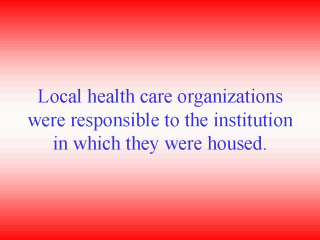 |
Feshbach (1985a)
and Davis (1987) described how medical care was delivered by facilities attached to
specific institutions in the economic sector: industries; factories; government agencies
such as the ministries of transportation, secondary education, defense, railroads, KGB
(State Security); and department stores. Only employees of these institutions had access
to the medical facilities, creating a multitier delivery system, with widely disparate
levels of available medical services. Urban and rural teaching and non-teaching hospitals
were open to the population residing within the geographic service area of the hospital.
Quality of medical care and public access to medical goods and services varied greatly
depending upon the location of the medical facility. Health care for the government and
management elite resembled services routinely available in the West but was inaccessible,
for example, to teachers, factory workers, or the general public. |
